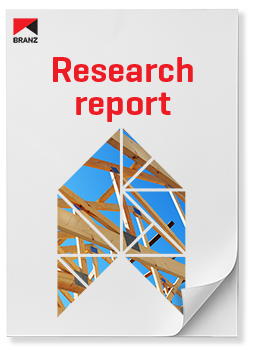
SR255 Car parks - fires involving modern cars and stacking systems (2011)
Product Description
This report was prepared during research into the effect that increasing fire loads in modern vehicles and the advent of car stacking systems may have on the current New Zealand Building Code (NZBC) fire provisions in car parks.
Traditional assumptions for fire safety design of car parks were based on the premise that cars burn slowly, fuel tanks rarely explode and fire spread to adjacent vehicles only occurs slowly if at all. These assumptions have been largely dispelled by the material make-up of new vehicles containing significantly more combustibles and hence fire load.
For well-ventilated above-ground car parks with one layer of vehicles on each level that have combined factors (increased fire load and the fire spread potential of modern vehicles and associated high fire loads), the increased fire hazard is still within the limits of the NZBC provisions.
However, factoring in modern car parking practices, such as vehicle stacking systems and more closed underground car parks, the fire load may increase by three to four times. Ventilation is reduced dramatically, leading to a much increased chance of hazards developing.
A survey of fire tests on new cars has shown that the traditional design assumptions of limited heat release rate (HRR) and fire spread are no longer valid. News reports of major car park fire incidents confirm that large fires are expected to be frequent occurrences in the future.
Fire modelling with the new car fire input parameters indicates that existing NZBC requirements for open natural ventilation in above-ground car parks remain satisfactory, but for closed underground car parks and/or car parks that may include stacking systems, tenability becomes a serious concern. Also, to lesser extent, the performance of structural steel members may be an issue.
Product Information
| Publication date | 2011 |
|---|---|
| Author | PCR Collier |
| System number | SR255 |